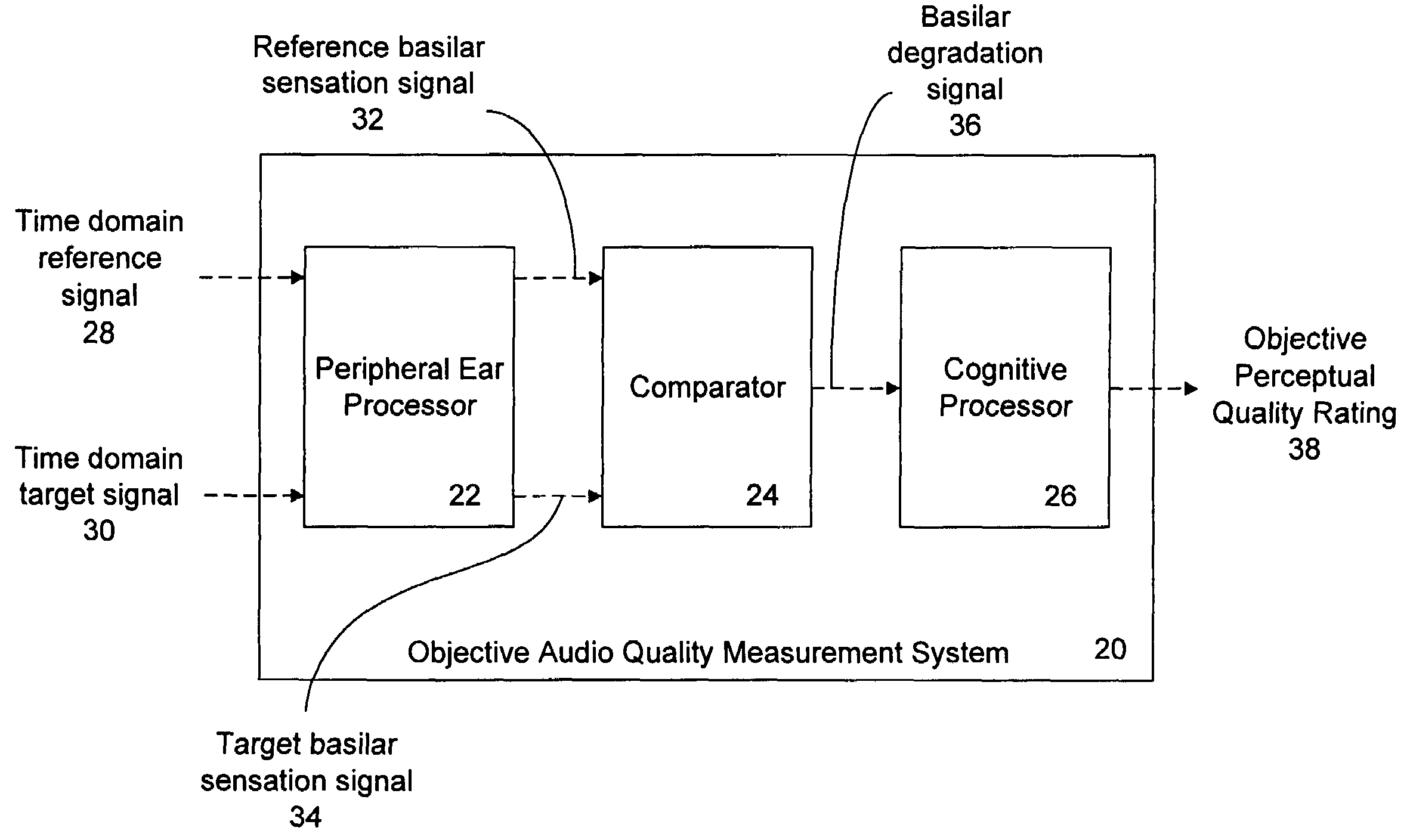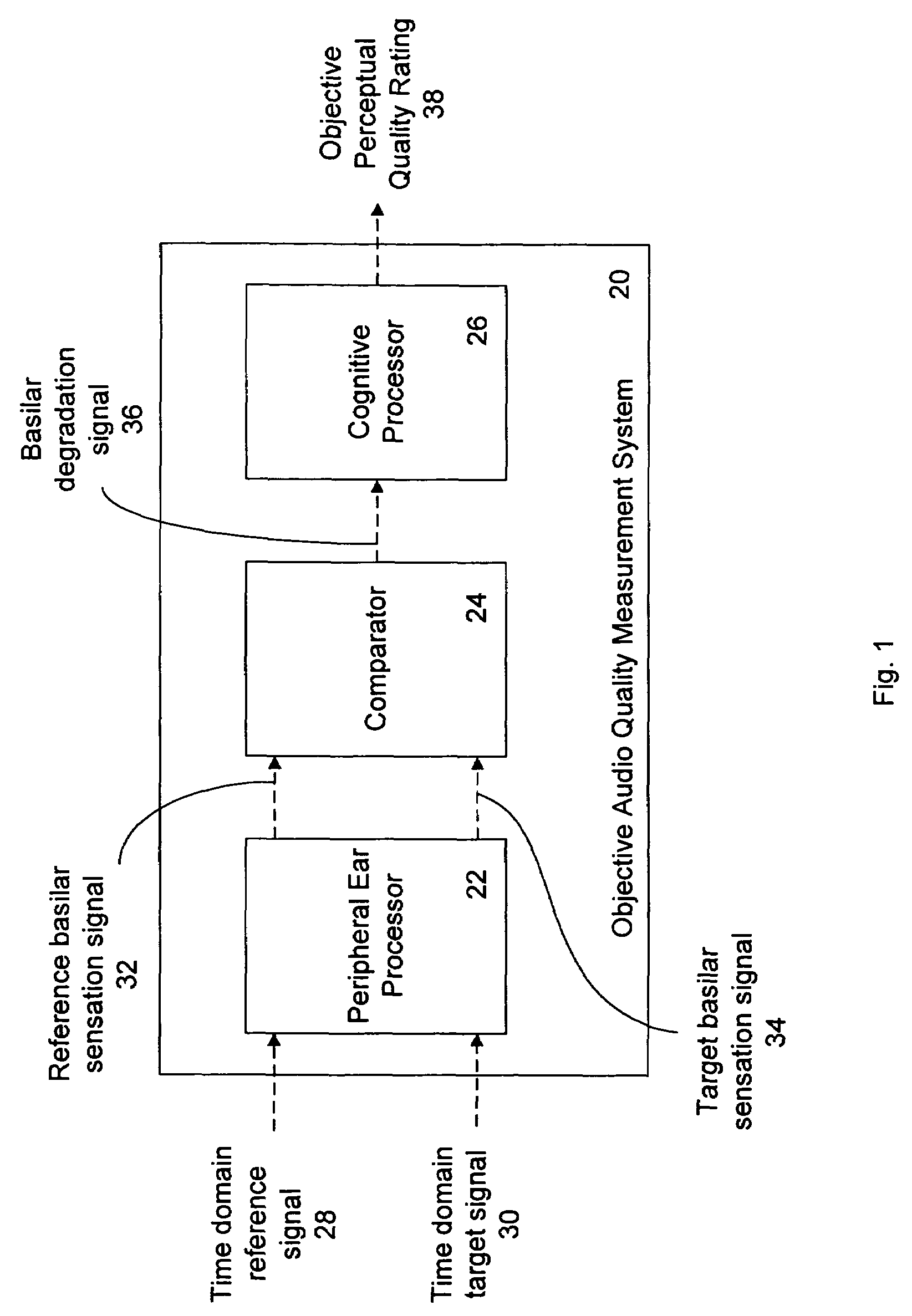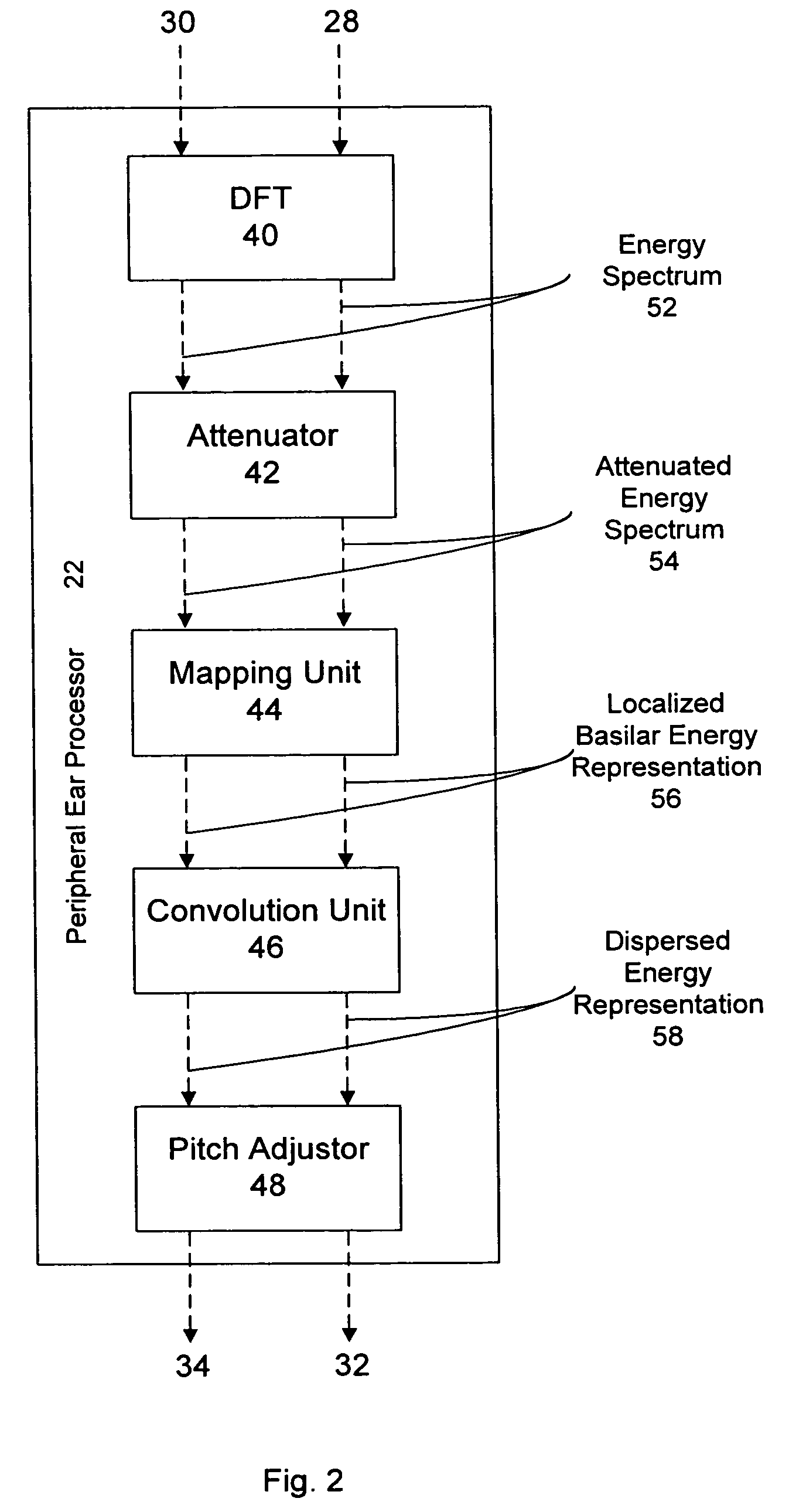Process and system for objective audio quality measurement
a technology of objective audio quality and process, applied in the field of objective audio quality measurement, can solve the problems of limited human listener's usefulness for determining audio quality, labour-intensive process, time-consuming and limited to subjective interpretation of listeners, etc., and achieve the effect of not applying the application of audio quality measurement in the field of process and system
- Summary
- Abstract
- Description
- Claims
- Application Information
AI Technical Summary
Benefits of technology
Problems solved by technology
Method used
Image
Examples
Embodiment Construction
[0028]Generally, the present invention provides an objective audio quality measurement system in which the peripheral auditory processes are simulated to create a basilar membrane representation of a target audio signal. To assess the quality of the audio sequence, the basilar membrane representation of the target audio signal is subsequently subjected to simple transformations based on assumptions about higher level perceptual, or cognitive, processing, in order to provided an estimated perceptual quality of the target signal relative to a known reference signal. Calibration of the system is achieved by using data obtained from human observers in a number of listening tests.
[0029]In developing a system for objective audio quality measurement, the physical shape and performance of the ear is first considered to develop a peripheral ear model. The primary regions of the ear include an outer portion, a middle portion and an inner portion. The outer ear is a partial barrier to external...
PUM
 Login to View More
Login to View More Abstract
Description
Claims
Application Information
 Login to View More
Login to View More - R&D
- Intellectual Property
- Life Sciences
- Materials
- Tech Scout
- Unparalleled Data Quality
- Higher Quality Content
- 60% Fewer Hallucinations
Browse by: Latest US Patents, China's latest patents, Technical Efficacy Thesaurus, Application Domain, Technology Topic, Popular Technical Reports.
© 2025 PatSnap. All rights reserved.Legal|Privacy policy|Modern Slavery Act Transparency Statement|Sitemap|About US| Contact US: help@patsnap.com



